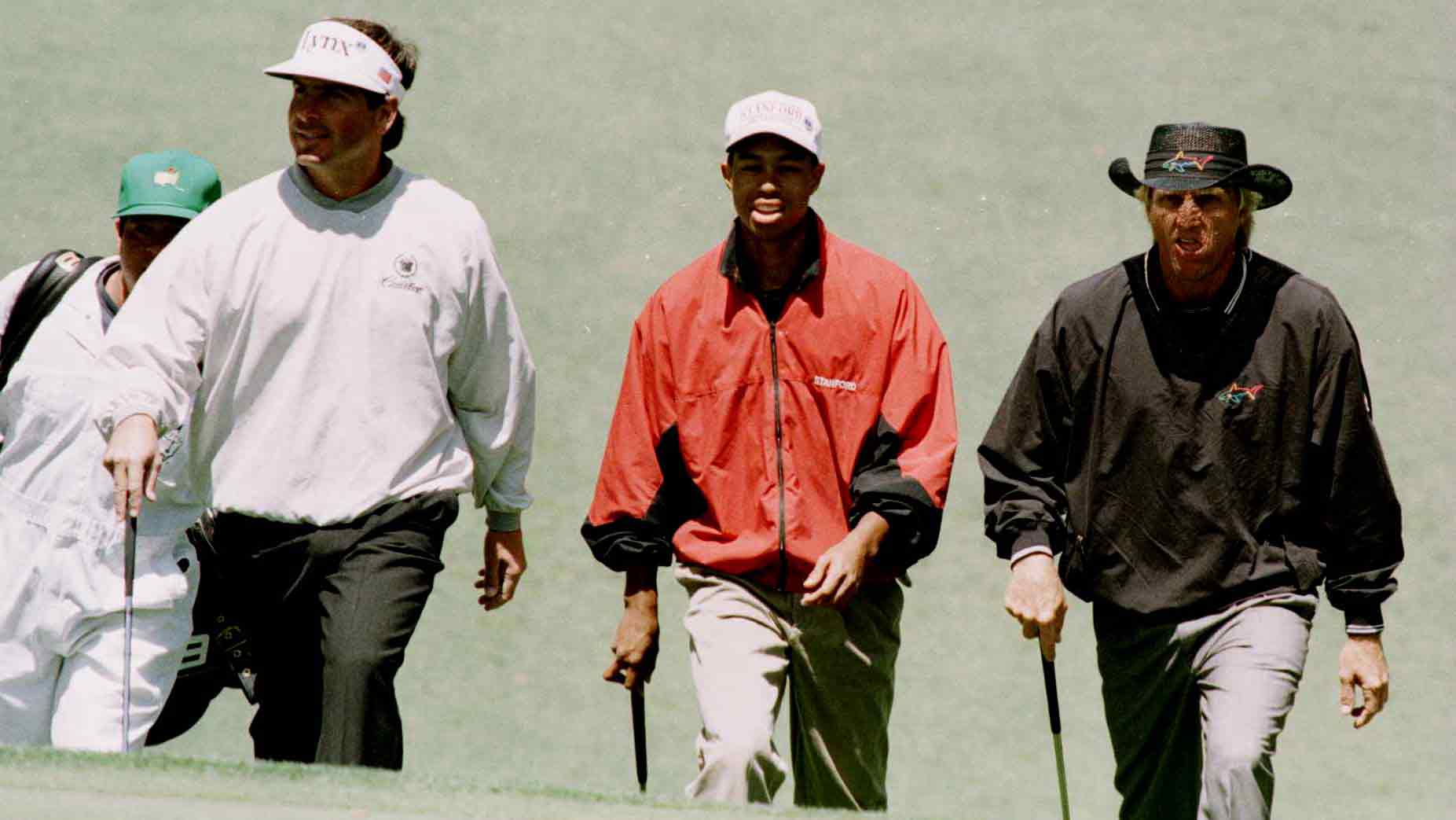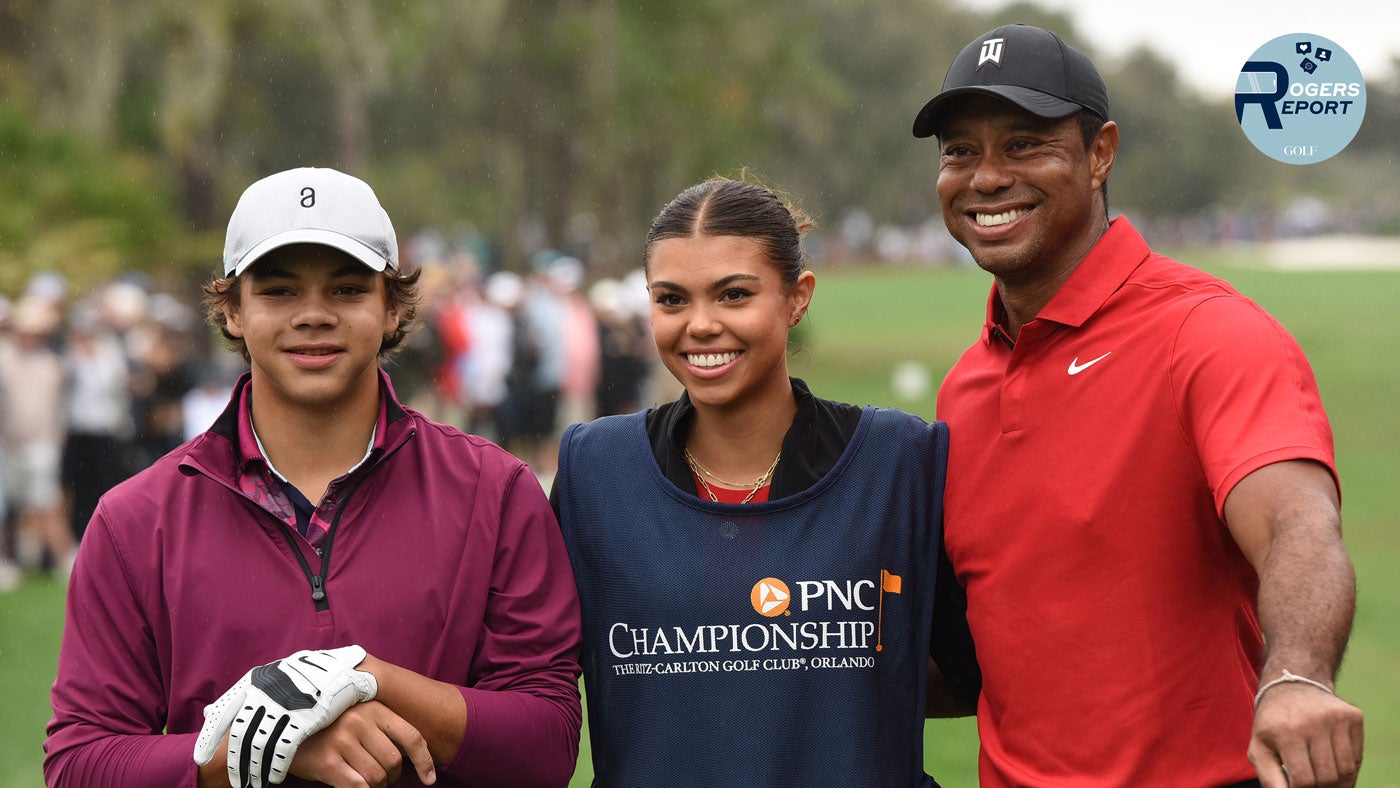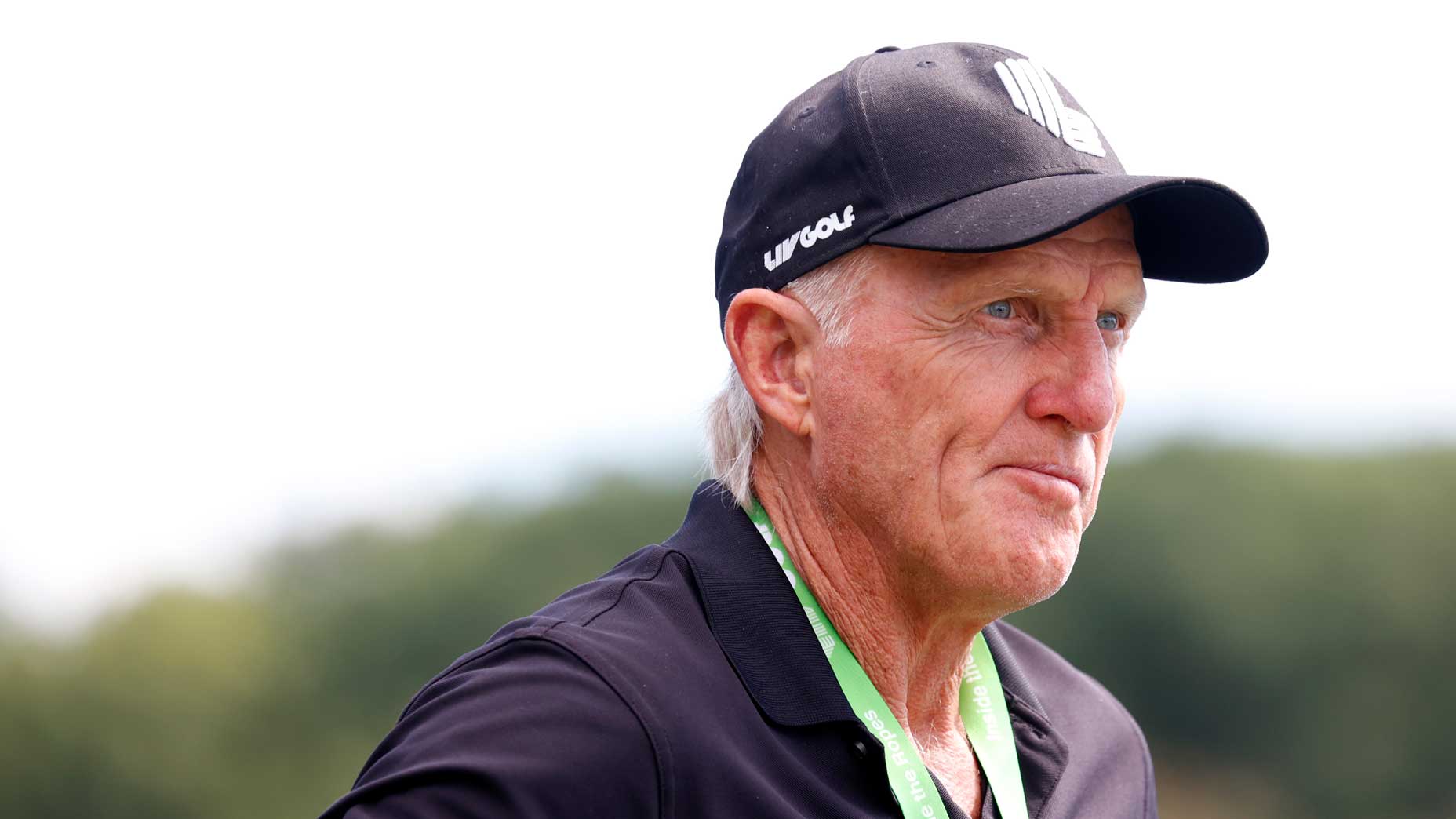Today is the third installment in a four-part Bamberger Briefly series in which Greg Norman offers his insights into various golfy subjects. Part I: Norman on Michael Jordan’s golf. Part II: Norman on helicopters.
HOBE SOUND, Fla. — In 1997, Tiger Woods replaced Greg Norman as the No. 1-ranked player in the world. Woods worked for years with Butch Harmon, Norman’s teacher. Woods had a long successful run with one of Norman’s former caddies, Steve Williams. Norman and Woods live near one another on Jupiter Island. Woods’s home course is Medalist, a club Norman founded with two others.
But they really don’t have a relationship.
“I would think we could have a good relationship because we like so many of the same things,” Norman said recently. “Scuba diving. Boating. Living on Jupiter Island. Golf. We’ve had similar positions in the game. I didn’t win majors anything like he did, but we were both needle-movers, to some degree. From my perspective, it would be easy, to have a relationship with him.”
Norman is 65 and Woods is 44. When Woods turned pro at age 20, Norman was still the best in the game, but his grip on the throne’s armrests was loosening.
Over the winter, Norman and his son, Gregory, saw Woods at Medalist and they had what the Australian golfer described as the only meaningful conversation he has ever had with Woods.
Among other things, Norman said, they “talked about the Father-Son golf tournament and I told Tiger how cool that is, to play in that with your son, no matter what age he is. I said, ‘There’s no better feeling than to be on center stage with your son.’
“And just that he asked me about it made me think that maybe this could be a fresh start. There was a softness to it. But it didn’t evolve after that. I didn’t expect, ‘What’s your phone number, let’s get together.’” But Norman thought that it might be the start of something.

“I’ve never really spent time around Tiger,” Norman said. He can recount most of their rounds together, in practice and in competition. They first played together in the early 1990s, when Tiger was 14 or 15. They played each other in 1998, at the Presidents Cup at Royal Melbourne, in singles. (Tiger won.) And they didn’t play much in between. Maybe a dozen or so times. Norman says he wrote more congratulatory notes to Woods than that on various wins. The notes, Norman says, did not trigger responses.
“Whether he crumpled them up, whether he got them at all, whether somebody in Tiger’s camp interfered with my efforts, I don’t know,” Norman said.
“Phil Mickelson is moving to Jupiter Island, and he reached out to me,” Norman said. “Phil and I were going back and forth about life here, his building a house, all that. But with Tiger, nothing.”
Norman’s house is about a mile north of the Woods home and about three miles south of where the Mickelsons will live, all on the same road, almost beside the Atlantic Ocean.
Speaking a few days before Match II, the fundraiser for Covid-19 charities held at Medalist that featured Woods, Mickelson, Peyton Manning and Tom Brady, Norman said, “It would be cool, to host them all at the house. Have a barbeque. Make steaks. Just talk.”
That didn’t happen, and Norman knew it wasn’t going to happen. Maybe the dynamic among a certain trio of golfers on Jupiter Island will change, when Phil comes to town. But Greg Norman’s not counting on it.
Michael Bamberger welcomes your comments at Michael_Bamberger@GOLF.com.










